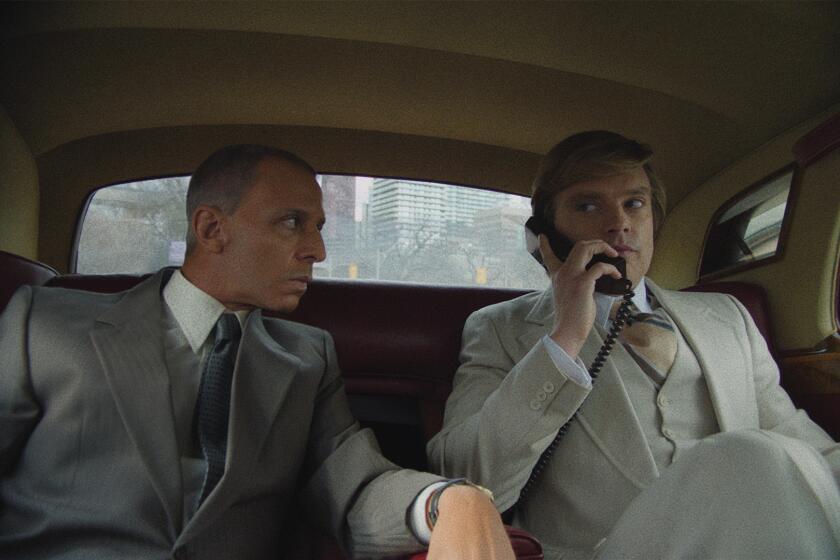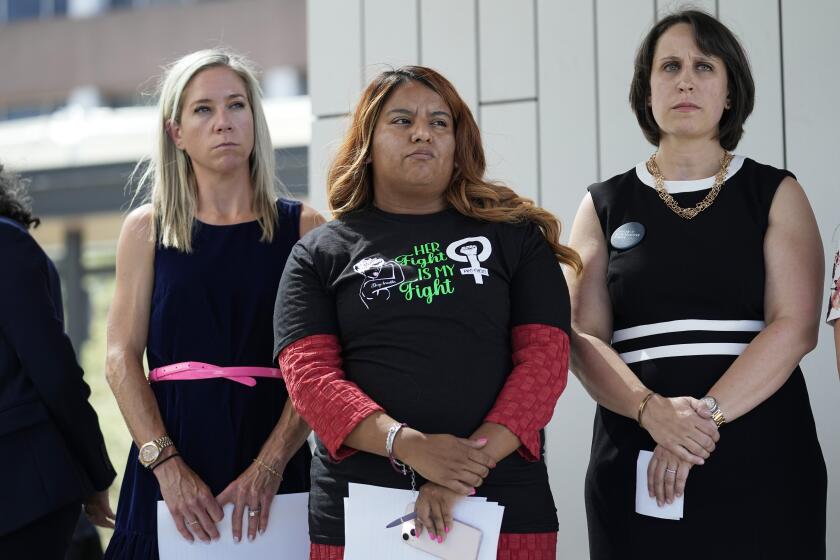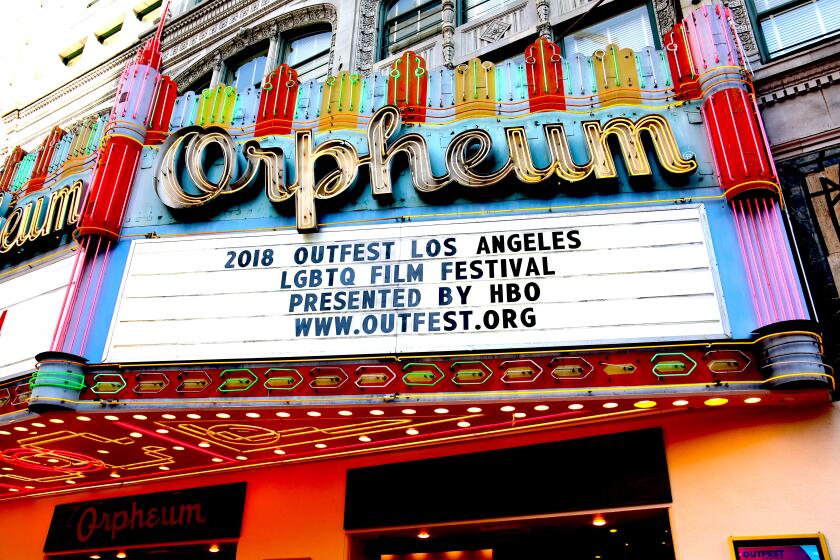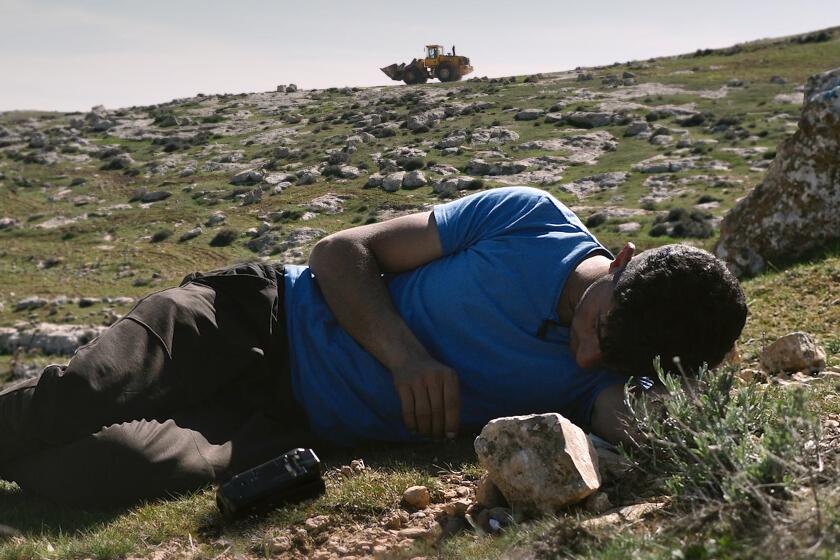The seven best films we saw at 2024 Telluride Film Festival

- Share via
TELLURIDE, Colo. — Originally a mining town in the mid-1800s, this Colorado Rockies outpost has since turned into a ski resort, a hiking destination and, as it happens, a different kind of mining town come Labor Day weekend, as journalists, producers and publicists dig for another kind of gold — the Oscar kind. Our three correspondents watched many titles and left with some nuggets of their own.
‘Carville: Winning Is Everything, Stupid’
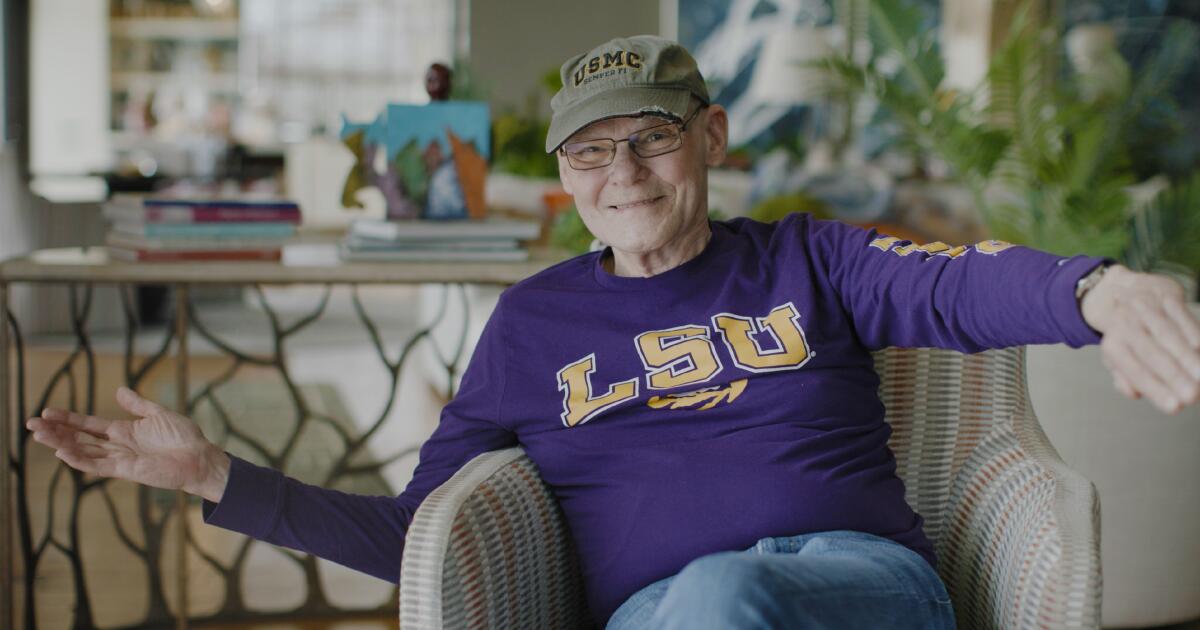
There was a bumper crop of excellent politically themed documentaries at this year’s festival, tackling hot-button issues such as reproductive rights (“Zurawski v Texas”), climate change (“The White House Effect”), the near-collapse of democracy in Brazil (“Apocalypse in the Tropics”) and the Trump administration’s family-separation policy at the border (“Separated”). But for sheer entertainment value, none topped Matthew Tyrnauer’s profile of famed Democratic consultant James Carville. The eccentric, shrewd strategist known as the “Ragin’ Cajun” — who rose from humble beginnings to prominence as the general in Bill Clinton’s 1992 campaign war room (and as one half, with Republican strategist Mary Matalin, of an unlikely D.C. power couple) — makes for a magnetic and often hilarious subject. But “Carville: Winning Is Everything, Stupid” is about more than one man’s journey in politics. It also offers a fascinating portrait of a marriage forged in the fires of partisanship and an inside look at how Carville angered many in his own party by pushing early on for Biden to withdraw from the 2024 presidential race. The film has been picked up by CNN Films for release in October ahead of the election. Just watch it, stupid! — Josh Rottenberg
‘Conclave’
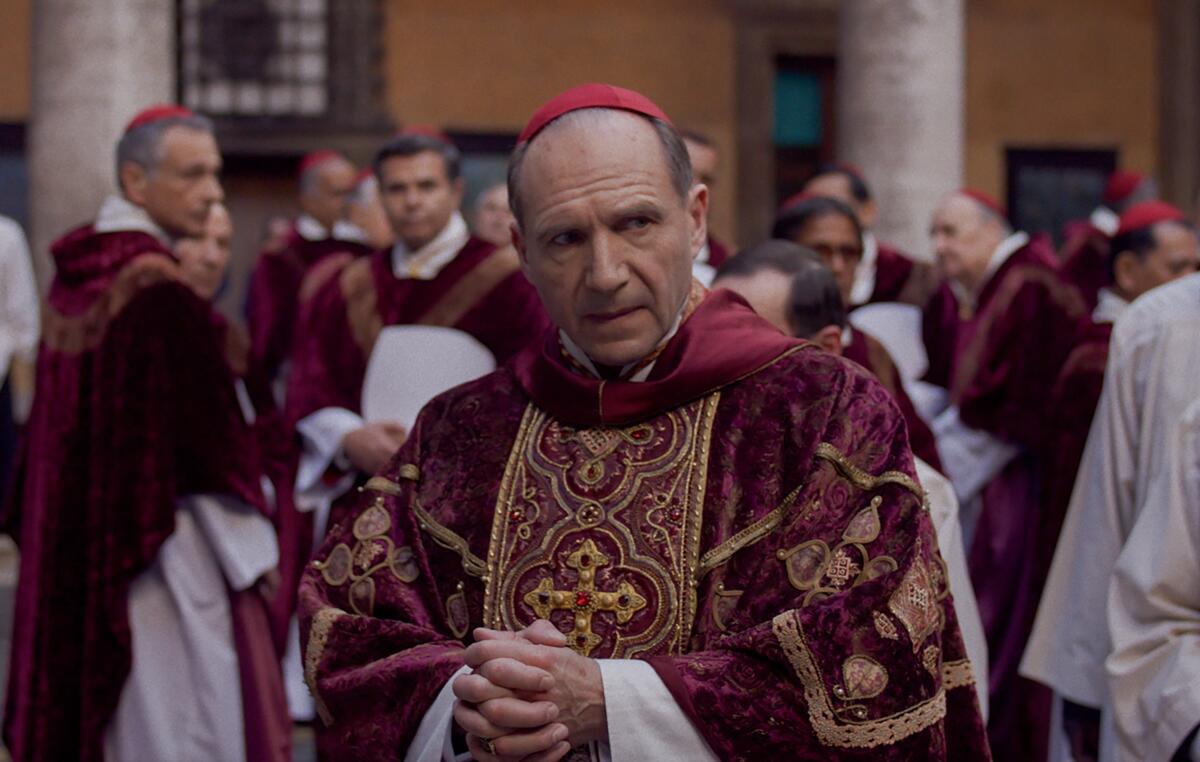
“Conclave” begins with the death of the Pope and ends … well, I can’t tell you how it ends, only to say that this movie’s final revelation will be discussed and debated and thoroughly savored by anyone who enjoys elevated trashy movies. Ralph Fiennes does most of the heavy lifting here, playing Cardinal Lawrence, a dutiful and doubting man overseeing the vote for the next pope. Ambition and cattiness complicate the proceedings. The candidates who are most dangerous, Lawrence notes, are the ones who want the job. Edward Berger adapts Robert Harris’ 2016 page-turner employing the same propulsive editing technique and bombastic score that made his last movie, “All Quiet on the Western Front,” a hit with audiences, awards voters and earplug salespeople. It’s a thriller about petty men undone by aspiration: mostly silly, sure, but also at times clever in its send-up of electoral politics. “Is this what we’re reduced to, considering the least worst option?” That line got a knowing laugh at the premiere, and the flamboyant performances from an ensemble that includes Stanley Tucci, John Lithgow and Isabella Rossellini made for good fun. We can’t be entirely distracted from the stakes in the upcoming election, but “Conclave,” out Nov. 1, will make for a momentary, enjoyable respite. — Glenn Whipp
World premieres of ‘Nickel Boys,’ ‘Conclave’ and ‘Saturday Night’ see freshness colliding with nostalgia, while Angelina Jolie’s turn in ‘Maria’ doesn’t hit the rafters.
‘The End’
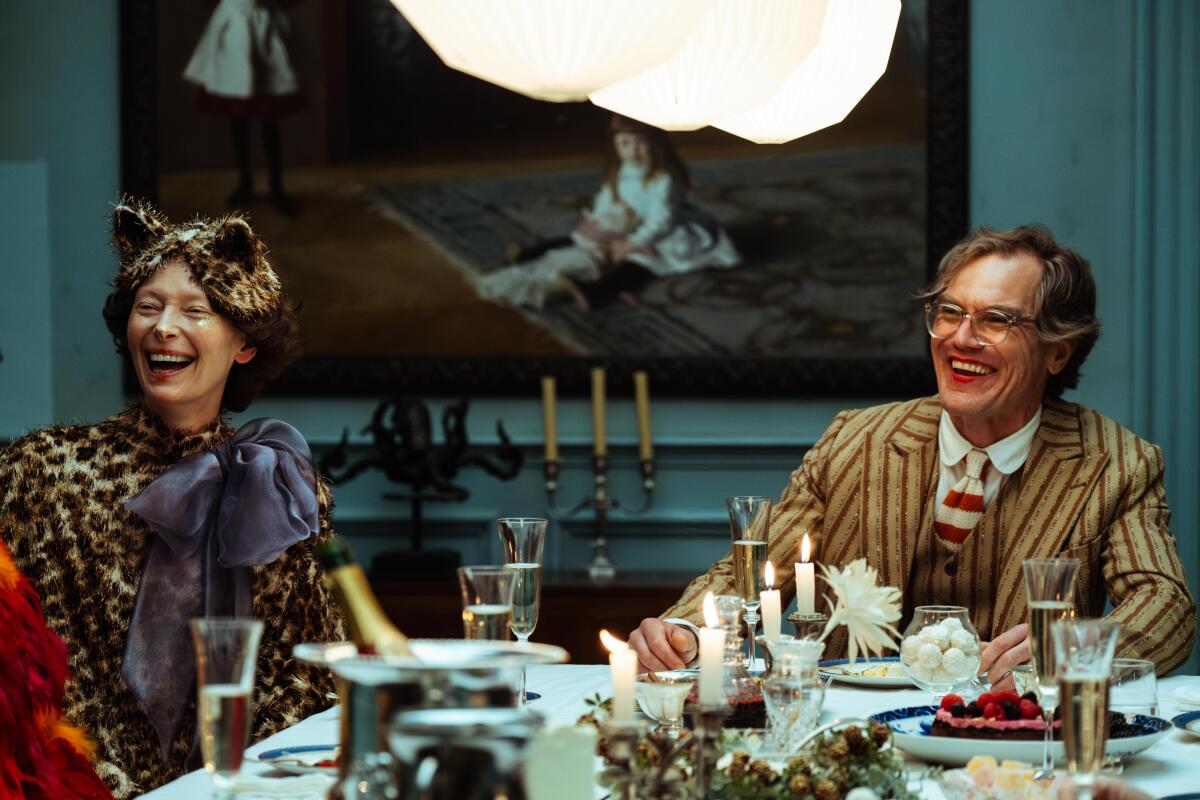
A family sings about its memories, as families often do in musicals. This one happens to live in a bunker underground and it’s 25 years after most of the world’s inhabitants have died. Confession time: I’m a connoisseur of postapocalyptic movies. (This summer’s impressively downbeat “A Quiet Place: Day One” earned high marks, and The Times last year spoke to “Testament” director Lynne Littman.) What’s often ignored in the weaker examples of the subgenre is psychology: the guilt and shame that any survivors would no doubt feel for doing too little and robbing their children of a future. Joshua Oppenheimer’s stunning “The End” — some kind of bleak masterpiece that most viewers will find too upsetting — is all psychology. The songs (Oppenheimer’s own lyrics set to music by Joshua Schmidt) play like jittery, mantra-like distractions to an unspoken horror, one that this clan’s patriarch (Michael Shannon) may have more culpability for than most. Meanwhile, his wife (an extraordinary Tilda Swinton) raises self-delusion to an art form. Do you remember those survivors in “Dawn of the Dead,” holed up in the shopping mall eating fancy food but staring at themselves in the mirror, nauseous and stuck in a waking nightmare? This film is like that. — Joshua Rothkopf
‘The Friend’

I’m a dog person, but I’m not a dog movie person. Dog movies are bad. They’re sappy and maudlin, aiming to reduce the audience to a puddle of tears. “The Friend,” which premiered at Telluride and, as of press time, is looking for a distributor, is mostly an exception, though the woman sitting next to me in the Palm Theater was sniffling throughout its last half-hour. The dog that appears in the movie is a Great Dane named Bing, who weighs 151 pounds and can look pensive on cue. I’m not going to reveal whether the dog dies, but it’s fair to tell you that its owner, a famous author played by Bill Murray, does pass away at the outset. He has requested that a former student and fling who became his best friend (Naomi Watts) take ownership of his other best friend. That sets up an odd-couple arrangement in which Watts must make space for this small horse of a dog in her life and New York apartment. Cute. But as the movie progresses, it becomes a touching meditation on grief, both human and canine. Directors Scott McGehee and David Siegel have remained true to the sweet spirit of Sigrid Nunez’s lightly plotted novel, providing Watts (and, yes, Bing) with terrific opportunities to shine. This crowd-pleaser shouldn’t have to beg to find a home. — G.W.
Sebastian Stan, Jeremy Strong and director Ali Abbasi dive into their controversial biopic and the stakes as it hits theaters just before the presidential election.
‘Nickel Boys’

A movie I’ve enjoyed writing about, “Nickel Boys” also has become the one I’ve thought about the most — a valuable kind of grappling, informed by Glenn Whipp’s sharp interview with co-star Aunjanue Ellis-Taylor. Per the actor, maybe a little viewer disorientation (or a lot) makes sense when we watch movies about systemic abuse and racism. Grammatically speaking, I’ve contemplated the power of the closeup, both an objectification and a privilege. Director RaMell Ross deploys them sparingly, choosing instead to put us in the heads of his characters, making us first-person witnesses to horror and compassion both. I don’t know if the simmering rage of Colson Whitehead’s novel is fully expressed by Ross’ strategy, but there’s no doubt that the filmmaker has made something strange and arresting, a drama that makes you do the work and supply its catharsis in retrospect. Not for nothing, the New York Film Festival — a showcase I hold in high regard — is opening its upcoming edition with “Nickel Boys,” a challenging choice that I applaud, and one that Telluride audiences got to experience first. Like “Uncut Gems,” it’s a example of the more daring side of the fest’s programming. — J. Rothkopf
‘September 5’
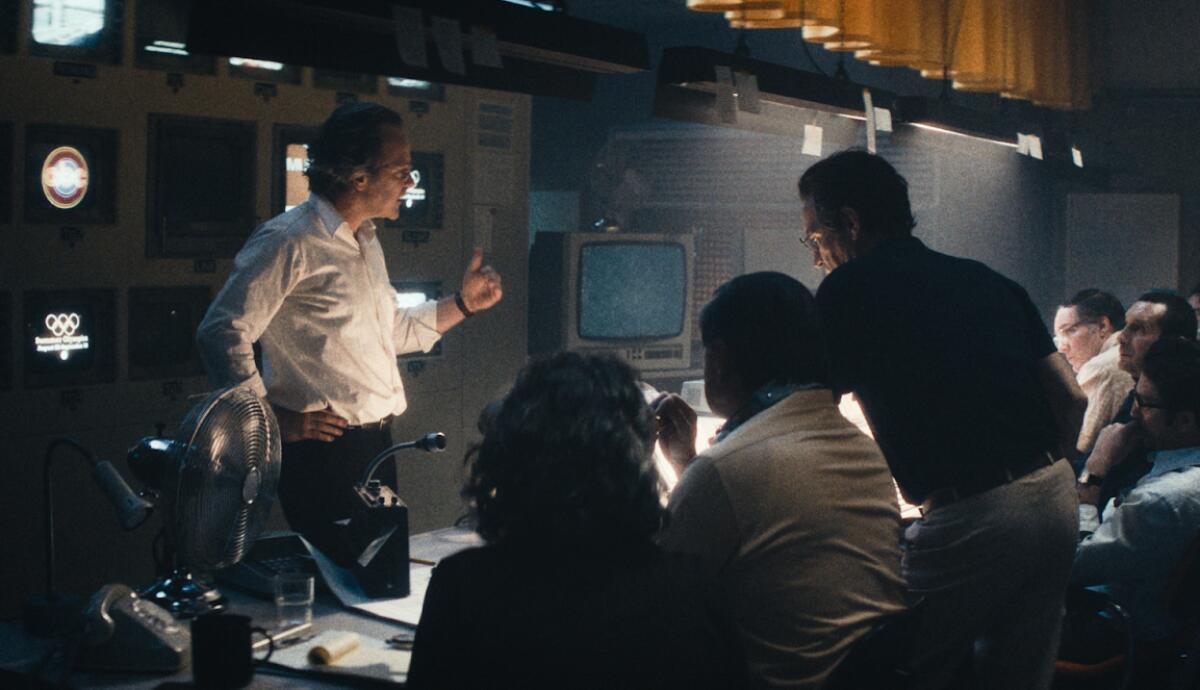
The story of the massacre at the 1972 Munich Summer Olympics, where Palestinian militants kidnapped and murdered 11 Israeli athletes, has been told numerous times onscreen before, most notably in the Oscar-winning 1999 documentary “One Day in September” and Steven Spielberg’s 2005 “Munich.” But “September 5” takes a fresh angle on these horrific events, unfolding entirely through the eyes of the ABC Sports team who found themselves scrambling to cover the crisis live on television. Swiss director Tim Fehlbaum skillfully creates a nail-biting real-time thriller without ever leaving the sweaty confines of a TV control room, as ABC Sports head Roone Arledge (Peter Sarsgaard) and producer Geoffrey Mason (John Magaro) make risky and ethically thorny decisions on the fly with incomplete information and potentially earth-shaking stakes. With its documentary-style verisimilitude, “September 5” is a film that deserves to be taught in journalism classes — and like Paul Greengrass’ similarly suspenseful and historically rooted “United 93,” it has the potential to be an awards player. Filmed before the Hamas attack of October 7 and the Israeli invasion of Gaza, the film has added layers of relevance and resonance. First, though, someone needs to pick it up for distribution. After its enthusiastic reception at Venice and Telluride, it should be only a matter of time. — J. Rottenberg
Hillary Clinton, James Carville, Jack Smith and other political figures descended on the Telluride Film Festival this year, lending D.C. star wattage to Q&As.
‘Zurawski v Texas’

Of the dozen or so movies I watched at Telluride this year, “Zurawski v Texas,” Maisie Crow and Abbie Perrault’s riveting documentary about the fight for women’s reproductive rights, was the film that landed hardest. The capacity crowd of about 700 people — hundreds more were turned away — cried, cheered and, at times, shouted their anger and disbelief over what they were watching onscreen. The movie opens with Amanda Zurawski testifying before the Senate Judiciary Committee, saying that because of Texas state abortion laws, she couldn’t terminate her nonviable pregnancy, ended up going into septic shock and suffered permanent damage to her uterus. (The camera catches Sen. Lindsey Graham rolling his eyes at one point during the proceedings.) Zurawski becomes the lead plaintiff in a lawsuit asking Texas Atty. Gen. Ken Paxton’s office to clearly define the medical exceptions under which the state would allow a woman to end her pregnancy. We follow Molly Duane, senior attorney for the Center for Reproductive Rights, building the lawsuit; as other women join, we hear their heartbreaking stories. “Zurawski v Texas” makes its case clearly and reasonably about how these laws, which many states have enacted after the Supreme Court overturned Roe v. Wade, are creating a healthcare crisis. The movie came to Telluride looking for a buyer. It’s so good that I imagine it’ll find one soon. — G.W.
More to Read
Only good movies
Get the Indie Focus newsletter, Mark Olsen's weekly guide to the world of cinema.
You may occasionally receive promotional content from the Los Angeles Times.

